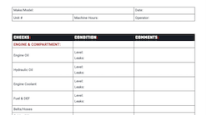Tractors With 6×2 Powertrains Save Fuel, but Fleets Still Reluctant to Adopt

Highway tractors with 6x2 power configurations have been heralded as an important technology for improving fuel mileage, but fleet owners have hesitated to select the systems because they have a tendency to run through tires more quickly and because diesel is less costly than it was earlier this decade. Also, the standard 6x4 configuration remains competitive.
This update on 6x2s by the North American Council for Freight Efficiency was issued July 11 and noted the systems now are in their third generation.
Executive Director Mike Roeth said 6 x 2s still offer an opportunity for fuel saving — a 2.5% increase in miles per gallon — but successful adoption is more complicated than originally seen in the council’s 2013 report.
“In 2014, we expected pretty quick adoption, which did not happen,” Roeth said during a telephone press conference. He listed diesel prices as a major factor.
The U.S. retail diesel average from 2010-14, NACFE’s original test period, was $3.71 per gallon. In contrast, for the year ended July 10, the diesel average was $2.49 a gallon.
Tire wear also was a big part of the NACFE report.
“Drive tire wear on 6x2s will not achieve parity with 6x4s. However, measures can be taken to reduce the accelerated wear. Selecting a retread trailer tire for the free-rolling axle may result in the lowest cost option for fleets,” the report said.
A 6x4 is the standard configuration for a power unit, meaning the tractor has six wheel positions, three on each side, and engine power is delivered to the four positions on the back of the tractor.
For a 6x2, the six wheel positions remain, but power goes to one or the other of the two rear tractor axles, leaving the wheels on the other rear axle — the tag axle — to roll freely as do wheels on a trailer.
In both cases, the steer axle up front is a completely separate system.
NACFE found that 4% to 5% of longhaul, North American tractors used 6x2 powertrains, up from 2% in 2013.
“While the increase could be interpreted as a 100% increase, the fact is that 6x2s are still viewed by many in the industry as a niche offering suited only for the Southern regions of the U.S.,” the report said.
Much of the fuel savings is related to weight reduction. A 6x4 configuration has two differentials to transmit driveshaft power to the wheels, whereas a 6x2 has just one differential, sometimes called a “pumpkin.” A truck differential can weigh about 300 pounds, the report said.
In tracing the evolution of 6x2s, the NACFE report said the first generation features two rear axles in fixed positions. The report said the initial approach had traction problems in icy conditions or with uneven terrain, and drivers did not like them.
The second and third generations offer load-shifting by adjusting pressure over the tag and drive axles. When a truck is moving at low speeds, an automated or manual load-shifting system adds weight over the powered axle in order to improve traction. At highway speeds, the load is split evenly between the drive and tag axles.
For the third generation of 6x2s, the tag axle becomes a liftable pusher axle. If a trailer is empty or carrying a light load, the pusher axle is lifted off the ground.
The development of the second and third generations also should help with resale values, Roeth said, as the first generation equipment has not been popular on the secondary market.
Roeth said another impediment to further 6x2 adoption is that 6x4 axles keep getting better. New, high-efficiency 6x4 axles lessen the case for 6x2s, he said.
The Environmental Protection Agency and the National Highway Traffic Safety Administration said in their Phase 2 rule on greenhouse gas emissions for trucks, the forecast for adoption of 6x2s rises to 30% in 2027 from 15% in 2021.
Roeth said a number of small fleets actually are leading the 6x2 campaign.
They “continue to make 6x2s work for them,” he said. Driver training is an important part of the equation, the report said.
“Drivers should understand the overall benefit of 6x2s, how the systems work and when a manual intervention is beneficial,” the report said, referring to manually starting a load shift.



